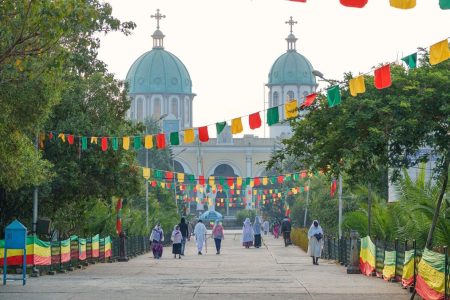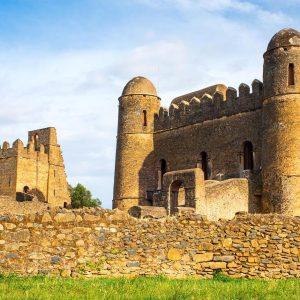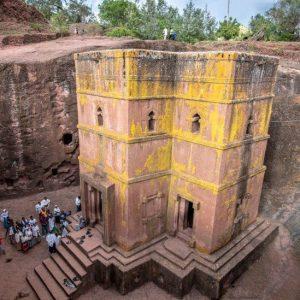Situated in the northern highlands of Ethiopia, Lalibela is a remarkable destination that transports visitors to an ancient and spiritual world. Renowned for its rock-hewn churches, this UNESCO World Heritage site is a testament to the architectural ingenuity and religious devotion of the Ethiopian people. Lalibela holds a special place in the hearts of Ethiopian Orthodox Christians and attracts travelers from around the globe seeking a unique cultural and historical experience.
- A Glimpse into History: Lalibela, named after King Lalibela of the Zagwe dynasty, was constructed in the 12th century. Legend has it that Lalibela was divinely inspired and guided by angels to create a “New Jerusalem” after the original Jerusalem fell under Muslim control. The rock-hewn churches were carved out of solid volcanic rock, and their construction is an architectural marvel that has fascinated historians and visitors alike for centuries.
- The Enigmatic Rock-Hewn Churches: Lalibela is home to eleven impressive rock-hewn churches, each with its own distinct design and significance. The most iconic among them is the Church of St. George, shaped like a cross and carved entirely from a single rock. This visually striking church stands as a symbol of Ethiopia’s deep-rooted Christian heritage and remains an active place of worship to this day.
- Pilgrimage and Spiritual Significance: Lalibela is an important pilgrimage site for Ethiopian Orthodox Christians, who flock here during religious festivals and holidays. The town comes alive with vibrant processions, chants, and prayers, creating a deeply spiritual atmosphere. Pilgrims engage in acts of devotion, such as kissing the church walls, lighting candles, and receiving blessings from priests, all while immersing themselves in the sacred ambiance that permeates the air.
- Architectural Marvels: The rock-hewn churches of Lalibela showcase incredible architectural precision and craftsmanship. The interiors are adorned with beautiful frescoes, ancient manuscripts, and religious artifacts. Visitors are awestruck by the intricate details of the stone-carved crosses, the impressive arches, and the delicate artwork that adorns the walls. Exploring these churches offers a glimpse into Ethiopia’s rich artistic heritage and the fusion of traditional Ethiopian styles with influences from Byzantine, Egyptian, and even Judaic architectural traditions.
- Cultural Immersion: Beyond the churches, Lalibela offers a chance to immerse oneself in Ethiopian culture and traditions. The local markets bustle with activity, offering a colorful array of traditional handicrafts, spices, and local delicacies. Engaging with the friendly locals provides a deeper understanding of their way of life, and sampling the mouthwatering Ethiopian cuisine, such as injera (a sourdough flatbread) and doro wat (spicy chicken stew), is a culinary delight.
Book Your Flights : Here 30% OFF on Booking
Book Your Hotels : Here 20% OFF on Booking


























0 Comment